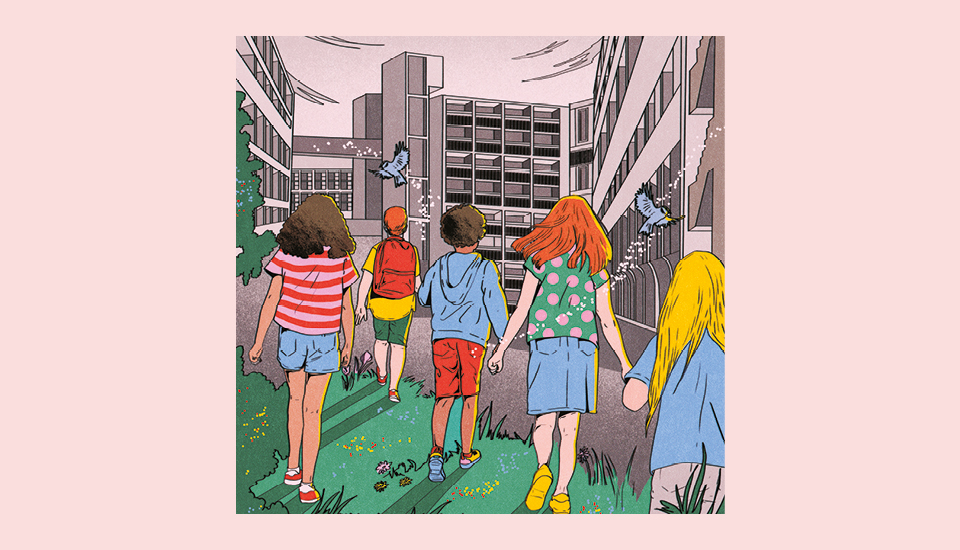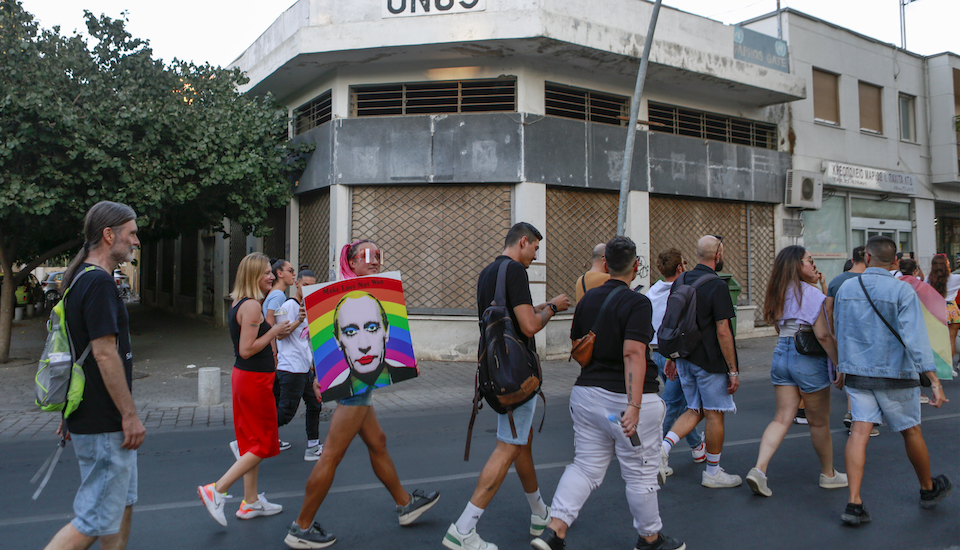The RSA is developing a programme of work that looks to put wellbeing at the centre of all our systems
Over the past year, it has become clear that the systems that surround us – whether work, transport, public services, government, community or family and friends – not only struggle under extreme pressure but ultimately cannot cope with complex challenges. The national lockdown was presented as needed in part to “protect the NHS” while mental health agencies struggled to maintain their services. We closed schools to quash the spread of Covid-19, while some of the poorest families were unable to feed their children.
The pandemic has shown that our systems are not designed to cope with the complex needs of a diverse population. Of course, this is not a typical situation, and you may be thinking it cannot be then used as a comparator. However, Covid-19 exposed the extent to which, even before the pandemic, we had managed to design complex systems that could not really cope with the complexity of the 21st century.

At the RSA we are exploring a programme of work that tries to look at how we can cope with this complexity. Our vision is a “world where our collective wellbeing drives the systems that surround us”. But what does that mean? And is this bold enough to truly capture the global social inequalities that affect so many? Is wellbeing a strong enough term?
Fundamentally, we believe it is. For us, wellbeing means the ability of individuals to lead a good life. However, for this vision to be realised, we believe we must see wellbeing as a systemic issue, which can be impacted by a range of complex factors, including both objective circumstance and subjective sense of security and happiness. The distribution of wellbeing is unequal, not just from individual to individual but because of systemic and structural inequalities.
Rebranding wellbeing
The RSA is by no means the first organisation to look at the value of complex thinking and placing wellbeing at the heart of systems; the British economist Richard Layard and colleagues situated wellbeing as crucial to happiness in their work on the annual World Happiness Report. UK charity What Works Wellbeing has made strides to embed wellbeing in policy and community practice and there is a growing movement to develop wellbeing economies, with the Wellbeing Alliance (which national governments are joining) developing strong partnerships in this space. In addition, some governments, including those in Wales and New Zealand, are starting to embed wellbeing in national policy.
Despite this recognition of the importance of wellbeing (and its more complex applications), it remains peripheral. To change this, it needs a rebrand. The RSA’s aim is to develop a compelling articulation of what is needed to lead a good life and the factors that enable the development of humane systems to support this as an end goal. It is the connection between these that we feel is crucial. Too often individuals must fit into systems that do not meet their needs. Labels such as ‘hard to reach’, ‘challenging behaviours’, ‘hidden’, ‘complex needs’ or ‘troubled families’ begin to be used, which allow systems to remain unchanged and individuals to be underserved. The RSA believes that there needs to be a clear shift to systems that are guided by people, not through the current method of consultation but by embedding participatory methods at all levels of service design.
Wellbeing has an image problem. The wider perception of its meaning is individualistic; often closely aligned to mental health but positioned as self-care. It is slight and shallow as opposed to robust and deep and too often implies that wellbeing is simply the responsibility of the individual to take care of themselves and improve. It is still often seen as less important than mental or physical health, yet wellbeing is crucial to population health and can capture the social and health inequalities that affect us throughout our lives. Recognising that wellbeing interconnects with social justice is critical for its rebrand. And, despite the increasing interest in it at a policy level, wellbeing remains far from the day-to-day experiences of those at the hard edges of life.
Dealing with complexity
To give some context, I was not always a policy wonk; I used to do real work in local third sector organisations supporting unpaid carers. So often, the people we supported had a complex web of issues that sat behind what led them to our door. Being an unpaid carer was the reason they came to us but often this was after they had ricocheted from one service to another, with each agency only able to address one facet of the life challenges they faced. Often, these challenges were linked to the fact that the person they supported was not getting the help they needed from the NHS or local authority. It is hardly surprising that carers get exhausted by this process.
All of this was (often) built on a foundation of poor housing, inflexible work options, schools that did not understand disability, issues around young carers and services designed to deal with one issue, as opposed to wrapping around a household (or family). When doing this job, I learnt to see the complex web of relationships and challenges woven around the individual sitting in front of me; my role was to help identify those threads and support that person to work through them so that they and their family were able to have a good life. For me, this was real, tough social action. This was and is wellbeing work.
Many services designed to support us are called ‘integrated’ or may use the term ‘joined up’, but often this means that individual services do not have the range of skills within them or a wider understanding of how their service connects with others to ensure that individuals and community needs are met. Toby Lowe’s example of the linear nature of public service commissioning (as part of his Human Learning Systems work) in relation to obesity services highlights that there are hundreds of factors contributing to outcomes, but commissioned services are often only able to affect a small number of these factors, meaning the individual’s complex wellbeing needs are not met.
The landmark 2010 report Fair Society, Healthy Lives (the Marmot Review) showed that social inequalities – such as household wealth, where you live and the start you have in life – significantly impact wellbeing, yet services that talk about wellbeing will have little impact on these structural factors. For instance, the Marmot Review shows that children who have low cognitive scores at the age of 22 months tend to catch up with their peers by the age of 10 if they are from high socioeconomic groups, whereas the scores of their peers from low socioeconomic groups actually worsen.
We need to change the systems that currently propagate a model of wellbeing inequality by not working together; we need to see the interconnectedness of people’s individual challenges.
A good example is the way we have approached road and public transport infrastructure thus far. We embraced car travel so wholeheartedly that it is now a huge contributor to population health damage through air pollution and a reduction in active travel. Research by Amanda Howell in the US shows that not factoring in access to affordable public transport can make affordable housing unaffordable if residents must spend excessive amounts on transport. Another example is work structures, which are created so that low wages, long hours and poor working conditions impact on our ability to live a balanced, well-supported life. The RSA’s work on economic insecurity identified that 30% of all workers felt they did not earn enough to maintain a decent standard of living. Essentially, systems do not work alone or collectively to fundamentally support our wellbeing.
Systems as well as individuals
Our research at the RSA shows that the complex nature of people needing to live a good life means we must look beyond poverty and inequality. These are vital areas of work, but embracing wellbeing inequality as a systemic issue means that those experiencing inequality and poverty do not remain siloed, allowing the challenges they face to be tackled collectively. Moving wellbeing into the space of system change and away from individual responsibility is important, but as the work on schools by Debbie Watson at the University of Bristol has shown, it is important to avoid seeing ‘good’ wellbeing as a one-size-fits-all solution; as an objective tick-list as opposed to something that is subjective.
So where does that leave us? I feel there are some crucial elements to consider if we are to approach wellbeing as a systemic – as well as a cultural – challenge. The first is the opportunity to approach wellbeing at a population health level and build it into structural systems to prevent its deterioration. For example, this would include looking at house-building policy – the quality, quantity and size of homes – and transport policy, alongside systems to address air pollution, which particularly impacts poorer communities. It would mean developing an education system that has wellbeing woven throughout it. For example, pupils in Estonia consistently outperform their peers in the UK. In Estonia, early-years education is focused on enabling children to be “school-ready”, meaning socially and emotionally ready, as well as educationally. And children are not grouped by ability.
At national policy level this would mean developing policies and encouraging practice that ensures employment is designed to support workers, guarantee good pay and conditions, and offer worthwhile experiences. And of course, there are the health and care systems, which – despite the language of integration – still rarely support the complex web of needs that make up wellbeing.
Participatory practice and wellbeing
The RSA has begun to explore how participatory practice can contribute to our wellbeing at both an individual and system level. There is a growing interest in participatory democracy, especially citizen assemblies and juries, with over 13 assemblies having being held since 2019 (it is hard to say how many more would have happened but for Covid-19). While this is incredibly welcome, the risk is that such approaches get commissioned by systems and services that are still more consultative than participatory.
It is important to ensure that a model designed to enable participation does not become another tool to enable the status quo to continue; co-production (widely used and promoted in health and care services) can be seen as quite a mixed bag across the UK. It needs proper investment and support to prevent it becoming a silo of its own. Shifting a system so that wellbeing becomes its core driver will not on its own fix things. Change takes time and is multi-layered; but if ever there was a moment to seize change, it is now.
Exploring organisations’ role in system change is important. The RSA has an opportunity to work with local people, their communities, our Fellows, partners and policy leaders to hold a mirror up to ourselves and acknowledge we can do better. Together, collectively and supportively, we can address the wellbeing inequality that exists within our society.
Related articles
-
Young at heart
Journal
Jonathan Prosser
Becoming a nation with children at its centre in 10 courageous steps.
-
Open RSA knowledge standards
Blog
Alessandra Tombazzi Tom Kenyon
After investigating ‘knowledge commons’, we're introducing our open RSA standards and what they mean for our practice, products and processes.
-
Worlds apart
Comment
Frank Gaffikin
We are at an inflexion point as a species with an increasing need for collaborative responses to the global crises we face.




Join the discussion
Comments
Please login to post a comment or reply
Don't have an account? Click here to register.
Dear Ruth, Is there a more important topic? I don't think so. From our first hours on earth, right through to our last, wellbeing is vital to our mental, and therefore, physical health. As you suggest, there are numerous factors which contribute or detract from it - social, personal, political, financial, occupational etc. Most of these have been individually researched well enough, but a strong publication that might lead to real change, is still awaited. Might this be the time to write one? If so, count me in.
This is an intelligent and thought-provoking contribution by Ruth Hannan which recognises the individualistic orientation of some aspects of the wellbeing literature and argues for a more collectivist, practice perspective.